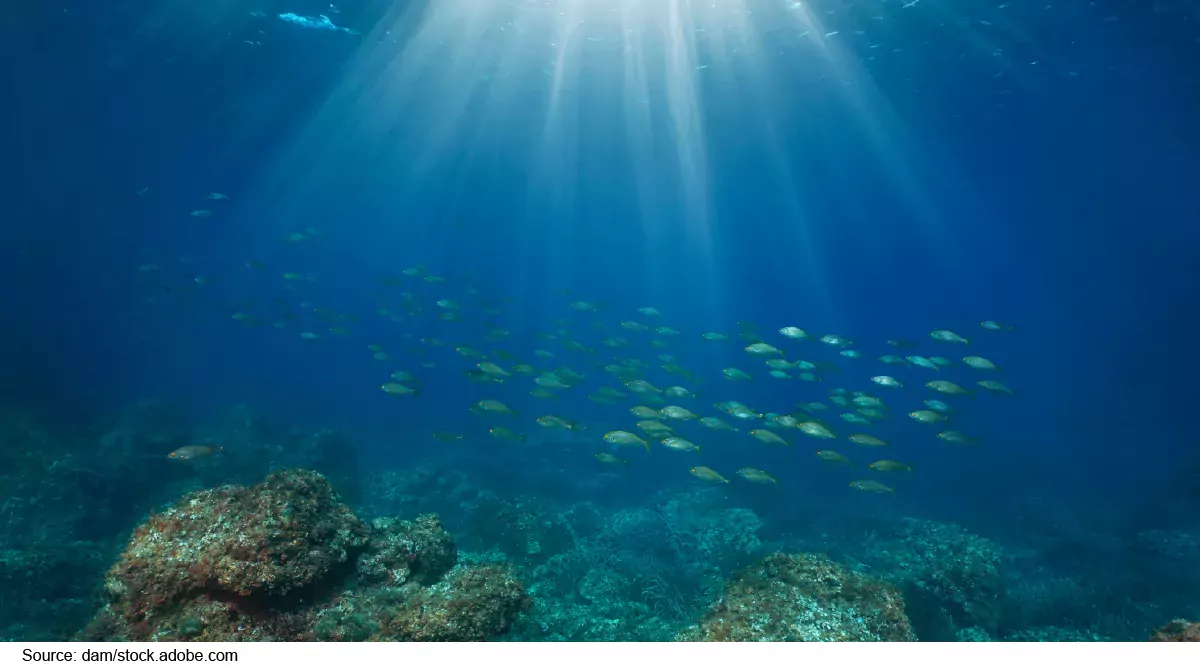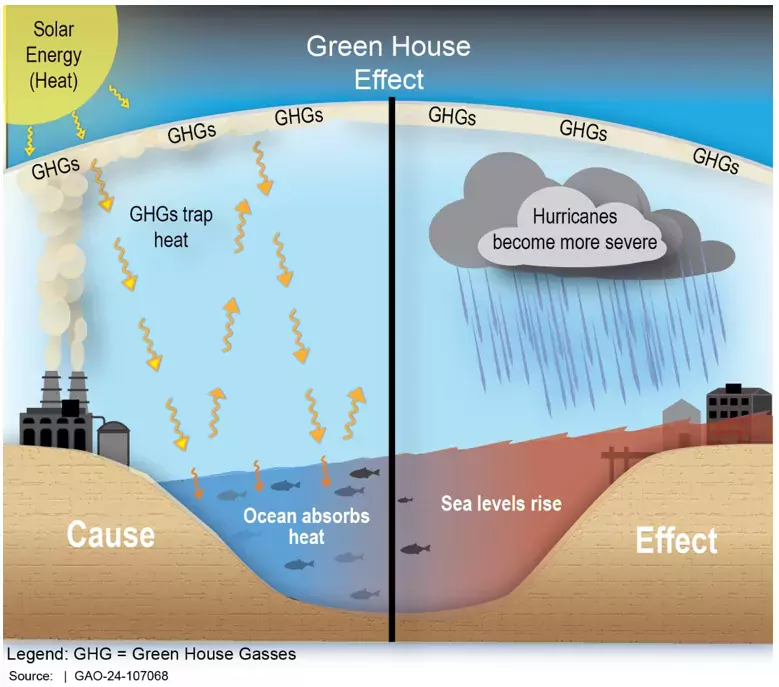Ocean Warming Is One of the Big Climate Change Question Marks
Over the summer, we heard a lot about ocean temperatures rising much faster than expected. Scientists and conservationists reported seeing bleached coral and other effects on marine wildlife. The consequences of ocean temperature increases could be more extreme and widespread in 2024 when combined with an anticipated El Niño, according to news reports.
Today’s WatchBlog post looks at our new Science & Technology Spotlight on Ocean Warming—including the big uncertainties that come with predicting future temperature increases and tipping points.
Image

What’s the outlook?
According to NASA, 2022 was the ocean’s warmest year since modern recordkeeping began in 1955. Estimates indicate that the ocean has absorbed more than 90% of the Earth’s warming since at least 1971, mostly near the surface. Global average sea level has risen 8-9 inches since 1880, in part because water expands as it warms. In places such as Miami Beach, the San Francisco Bay Area, and Norfolk, Virginia substantial investments are being made to cope with frequent flooding that disrupts daily life and business operations.
Image

The future impacts of rising temperatures could be catastrophic. Increased heat absorption can change ocean currents, which move heat around the world. These changes can influence climate patterns and ecosystems in ways that scientists don’t understand well. In addition, rising sea levels can damage infrastructure and make coastal communities more vulnerable to storm surges and flooding. Warmer ocean water also provides more energy for storms to develop and intensify.
Another potential impact is an increase in marine heatwaves—periods of abnormally warm ocean temperatures. Ocean warming is making them more frequent, intense, and prolonged. Marine heatwaves can stress and kill marine life and disrupt ecosystems. For example, they can cause coral bleaching, which can lead to the death of coral reefs and the ecosystems that depend on them.
Yet another possible impact is on the economy. Billions of people rely on ocean fisheries for food and jobs. In the U.S. alone, they accounted for 1.7 million jobs and $253 billion in sales in 2020. In 2022, we reported that some U.S. fisheries managers have begun using climate change information to increase the resilience of their fisheries. But they face challenges, including limited data and modeling information, as well as resource constraints.
Predicting future temperature increases and tipping points
Some studies suggest that major changes in the ocean and the climate can happen as soon as a few years from now. But forecasting such changes is difficult. Scientists must grapple with natural variability in the global climate, limitations of climate models, and measurement errors from imprecise instruments. Communicating these complexities and uncertainties is also challenging.
Even so, some researchers predict that there are several potential tipping points, or thresholds, beyond which changes could become irreversible. Examples include the collapse of the Greenland ice sheet, the collapse of the West Antarctic ice sheet, tropical coral reef die-off, and permafrost thawing.
Studies of Earth’s history, using tree rings, ocean sediments, and ice cores, show tipping points occurring through large, rapid changes over the course of decades or as little as a few years. One such tipping point was reached about 12,000 years ago, ending the most recent Ice Age. This event is also associated with the extinction of over 70% of large mammals in North America.
Our Spotlight on ocean warming looks at opportunities and policy questions that could help scientists and Congress respond to this crisis. Learn more about our work and the impacts of ocean warming by checking out this new work.
- GAO’s fact-based, nonpartisan information helps Congress and federal agencies improve government. The WatchBlog lets us contextualize GAO’s work a little more for the public. Check out more of our posts at GAO.gov/blog.
GAO Contacts
Related Products

GAO's mission is to provide Congress with fact-based, nonpartisan information that can help improve federal government performance and ensure accountability for the benefit of the American people. GAO launched its WatchBlog in January, 2014, as part of its continuing effort to reach its audiences—Congress and the American people—where they are currently looking for information.
The blog format allows GAO to provide a little more context about its work than it can offer on its other social media platforms. Posts will tie GAO work to current events and the news; show how GAO’s work is affecting agencies or legislation; highlight reports, testimonies, and issue areas where GAO does work; and provide information about GAO itself, among other things.
Please send any feedback on GAO's WatchBlog to blog@gao.gov.




